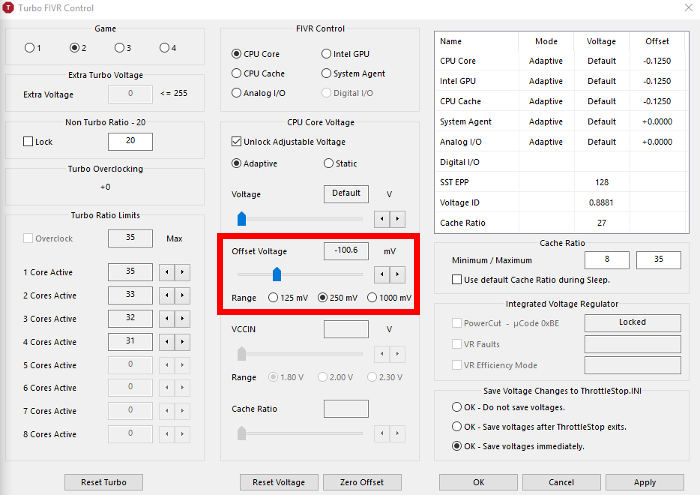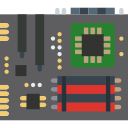How To Undervolt Your CPU To Reduce Temperatures
sThe more CPU demanding tasks you carry out on your system, the more CPU will heat up. This is especially noticeable during gaming and visually demanding tasks, such as 3D design and rendering. However, your processor (CPU) may be vulnerable to overheating anyway if the thermal paste has worn out or your CPU is poorly cooled.

If you think that you are in a pinch, then don’t worry because there is a magic tool that can help you in reducing high CPU temperatures through a process known as “undervolting”.
In this article, we will be taking a look at how you can undervolt your CPU to reduce temperatures. Excited? Then without further ado, let’s get started!
What is Undervolting?
Before we begin, you must be wondering, what exactly is undervolting?
In most cases, the factory settings for processors are designed in such a way that it feeds more voltage to the CPU than it actually needs. The extra voltage and current causes heat in the CPU that further reduces the performance of the CPU.
To overcome this problem, undervolting is used. It is a simple process where the users use specialized tools like Throttlestop or XTU by Intel to reduce the voltage of the CPU while keeping the overall performance the same.
While undervolting doesn’t necessarily damage your CPU, if you overdo it, you might make your PC unstable. On the other hand, overvolting can potentially damage your CPU; however, if used smartly, it can enable you to overclock your CPU.
Undervolting lowers the amount of voltage/power being directed to your processor. The more power your CPU gets, the hotter it becomes. The lesser power it gets, the cooler it becomes.
The cherry on top is that undervolting doesn’t affect the overall performance, even during intensive gaming sessions.
How to Undervolt Your CPU?
You can use different tools to undervolt your CPU. In this article, we will be using Throttlestop as it is intuitive and easy to use.
Step 1: Download and Install Throttle Step
This is the most basic step. All you have to do is go to Google and type “Throttlestop”. Hit enter, and you will see a bunch of links. Click on the first link and go to the download section.

Once you’re in the download section, look at the top left corner of the screen. Click on the “Download” button to begin your downloading.

Once you have downloaded, simply follow the steps and install Throttlestop.
Step 2: Open Throttlestop
When you open Throttlestop for the first time, you’ll see a bunch of options and numbers. At this point, you may think that you are lost, but don’t worry, we’re here to help you.
First and foremost, ignore the numbers. Although they are pretty handy, for now, we don’t need them. The most relevant are the four-select circles right at the top left corner of the software.
These circles are four different profiles: Performance, Game, Internet, and Battery. We’ll select the “Game” profile as we are hoping to undervolt our CPU to get better temperatures during the game.
Once you’ve selected your profile, simply click on the “FIVR” button to begin configuring the voltage/power values.

Step 3: Adjusting the Voltage/Power Values
Selecting the “FIVR” button will open up a new window. In this window, check the “Unlock Adjustable Voltage” box and start decreasing the slider of the “Offset Voltage”. This part is where your undervolting begins. For starters, keep the value to -100mv to get stable results.
Step 4: Adjust CPU Cache
Once you have done that, click on the “CPU Cache” and set its value to -100mv. Remember, the value of the Offset Voltage of both “CPU Cache” and “CPU Core” must be the same, for better stability.

Step 5: That’s It!
There you have it! All you have to do now is to start playing a game. You can track the CPU temperature and system stability using a variety of software. We recommend using MSI Afterburner as it allows users great functionalities.
Final Verdict
Using this technique, I was able to reduce the temperatures of my CPU from 90°C to all the way down to 75°C.
Isn’t that great?
But hey, this is about as much as you can get using the software. If your temperatures are still high, the chances are that your thermal paste has worn out or your CPU cooler isn’t working properly.
Now that you know how to undervolt CPU to reduce temperatures, you can use this method to ensure CPU stability without sacrificing the performance.
So, what are you waiting for? Start undervolting and push your CPU beyond its limits!





